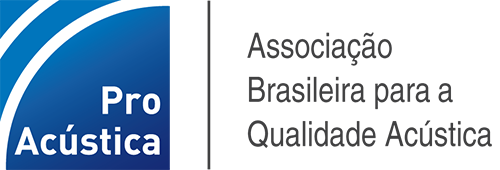Overview
The Inter-Noise 2025 program offers a well-balanced structure aimed at promoting technical and scientific exchange in the field of noise control. It brings together experts from academia and industry through a variety of session formats and networking opportunities. The program includes:
- Plenary and keynote lectures on relevant and emerging topics in noise control
- Parallel technical sessions covering a wide range of subjects
- Poster and online sessions, featuring flash presentations and interactive discussions
- Social events to foster community engagement and collaboration
- An industrial exhibition will be held on the main event floor, where the opening and closing ceremonies, coffee breaks, and plenary/keynote sessions will also take place—encouraging interaction between exhibitors and attendees.
- A technical visit to the renowned Sala São Paulo will be offered to delegates, with free registration required.
Session Schedule at a Glance
Note 1: To identify the sessions and their codes, please refer to the list of Main Topics and Technical Sessions below the schedule.
Note 2: Some sessions have been merged; authors should check their personal accounts for updated information regarding session assignments.
Registration Desk Hours
August 24: 12:00 PM – 6:00 PM
August 25–26: 8:00 AM – 6:00 PM
August 27: 8:00 AM – 2:00 PM
A cloakroom will be available during the same hours.
Main topics and technical sessions
1.0. Physical Acoustics & Elastic Waves: General
1.2. Sound Interaction with Natural Media
1.3. Elastic & mechanical Metamaterials: Waves and Dynamics
1.4. Acoustic Metamaterials & Phononic Materials
2.0. Measurement Methods: General
2.1. Microphone Array Techniques
2.2. Measurement Instrumentation
2.3. Measurement Methods for Smart Cities and Noise Monitoring
3.0. Modeling & Simulation Techniques: General
3.1 Computational Methods & AI in Vibro-Acoustics”
3.2. Data-driven and Machine Learning Methods for Modeling and Design in Acoustics & Vibration
3.3. Acoustic Design using Optimization Methods
4.0 – Vibro-Acoustics: Theory, Numerical Methods & Experiments
4.1 – Advanced Vibro-Acoustic Control
5.0 – Aero- & Thermo-Acoustics: Fundamentals & Control Strategies
5.1. Rotor & Turbomachinery Noise
5.2. Duct Aero-acoustics: Propagation and Noise Reduction in Industrial and Academical Problems
6.0. Active Systems for Noise & Vibration Control: General
6.1.Advanced Active Control: Algorithms, Applications & Smart Metamaterial
7.0. Aircraft Noise
7.1. Airport Noise
7.2. Urban Air Mobility Noise
8.0. Ground Transportation and Industrial Noise: Detection, Mitigation and Modelling
8.1. Acoustics of Vehicles, Tires and Pavements
9.0 Flow-induced Noise & Vibrations: General
10.0 Propeller noise: General
11.0 Building Acoustics: General
11.1. Requirements, Classification Schemes & Standards in Building Acoustics
11.2 Measurement and Prediction of Airborne, facade and Impact Sound Insulation
11.3. Measurement and Prediction of Sound Absorption in Reverberation Rooms
11.4. Addressing Noise and Vibration Problems in Buildings
11.5. Acoustics of Education Spaces and workspaces
11.6. Computational Tools for Room Acoustics Prediction
11.7. Acoustics of Performing Arts Spaces and Recording Studios
12.0. Outdoor Sound Propagation: General
12.1. Urban Sound Propagation
13.0. Materials & Passive Treatments: General
13.1. Measurements and Characterization Methods for Acoustical Materials
14.0. Community Noise & Health: General
14.1. Occupational Noise and Health
14.2. Noise and Health
14.3. Noise and Health in Children
14.4. Occupational noise control in African industries – Current and future perspectives
15.0. Soundscape: General
15.1 Soundscapes in Built Environments
15.2. Psychological and Physiological Evaluation in Soundscape Studies
15.3. Soundscape Policies and Standards
16.0. Perceptual Evaluation of Sounds and Product Noise: General
16.1. Perception and Sound Design for Electric Vehicles
17.0. Noise & Impacts on Biodiversity: General
18.0. Art, Music & Science: General
19.0. Education & Popularization: General
20.0. Non Auditory Effects of Noise Exposure on Communication and Performance
20.1. Special Topics




